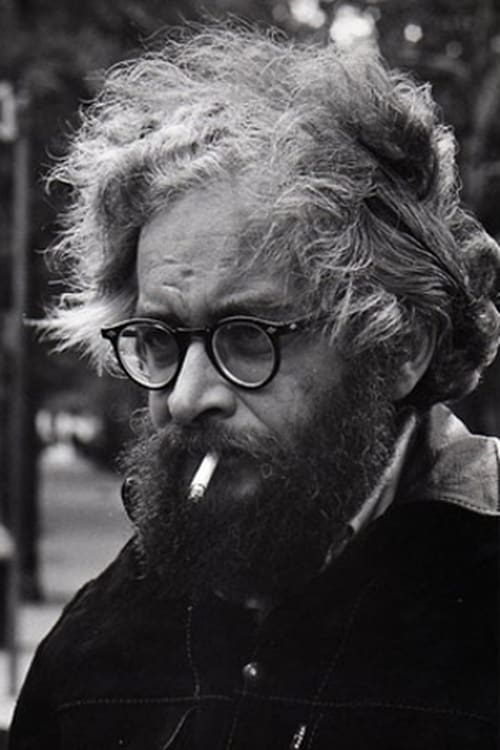
Harry Smith
Birth : 1923-05-29, Portland, Oregon
Death : 1991-11-27
History
Harry Everett Smith (May 29, 1923 in Portland, Oregon – November 27, 1991 in New York City) was a visual artist, experimental filmmaker, record collector, bohemian, mystic, and largely self-taught student of anthropology. Smith was an important figure in the Beat Generation scene in New York City, and his activities, such as his use of mind-altering substances and interest in esoteric spirituality, anticipated aspects of the Hippie movement. Besides his films, Smith is widely known for his influential Anthology of American Folk Music, drawn from his extensive collection of out-of-print commercial 78 rpm recordings.
Throughout his life Smith was an inveterate collector. In addition to records, artifacts he collected included string figures,[1] paper airplanes, Seminole textiles, and Ukrainian Easter eggs.
Description above from the Wikipedia article Harry Everett Smith, licensed under CC-BY-SA, full list of contributors on Wikipedia.

The 94-year-old Robert Frank’s unique recordings of his fellow artists Harry Smith and Allen Ginsberg, which he had salvaged from his own archive for Harry Smith at the Breslin Hotel.
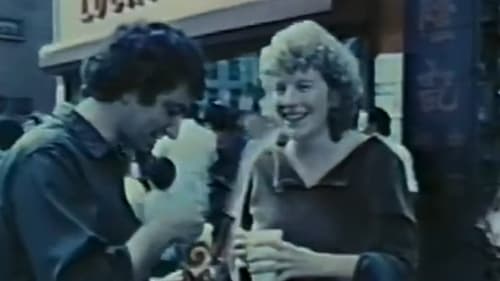
Self
Filmmaker Jonas Mekas films 160 underground film people over four decades.

Director
Film No. 19
US, 1980, 35mm, 12.5 min.

Director
Harry Smith’s final film; an epic four-screen projection. Smith worked on this cinematic transformation of Kurt Weill and Bertolt Brecht’s opera Rise and Fall of the City of Mahagonny (1929) for over ten years and considered it his magnum opus. The film was shot from 1970 to 1972 and edited for the next eight years. The “program” of the film is meticulous, with a complex structure and order. The Weill opera is transformed into a numerological and symbolic system. Images in the film are divided into categories— portraits, animation, symbols and nature— to form the palindrome P.A.S.A.N.A.S.A.P. The film contains invaluable cameos of important avant-garde figures such as Allen Ginsberg, Patti Smith, and Jonas Mekas, intercut with installation pieces from Robert Mapplethorpe’s studio, New York City landmarks of the era, and Smith’s visionary animation.

Director
Features Thelonious Monk's Misterioso. Extended version of No. 11 printed forward-backward-forward.

Self
A Pilot For A Documentary Film About The Life In The Chelsea Hotel In The Early 1970s, That Was Never Made Because Of Budget Reasons. "A Regrettable Folly Of My Youth" Says Albert Scopin.
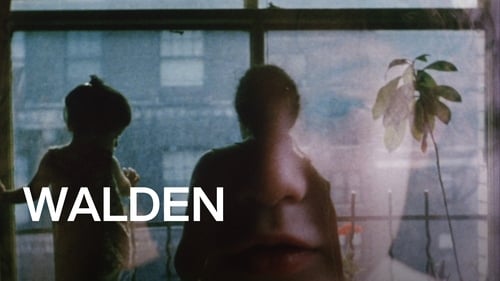
Self
An epic portrait of the New York avant-garde art scene of the 60s.

Director
The Tin Woodman, framed by light bulbs, does a little dance, leaps and retrieves his axe from outside the frame, chops down a tree that turns into various objects, grabs a heart emblem from the corner, and goes to the Emerald City at night with Toto. He goes to the edge of a cliff, where he meats an Asian spirit who gives him a heart shape that becomes a kite that hooks to him with a cane. This is followed by approximately ten minutes of kaleidoscopic images, including a man's hands, a dancing girl, and a cutout of Krishna. - IMDb

Self
The films were made between 1964 and 1966 at Warhol's Factory studio in New York City. Subjects were captured in stark relief by a strong key light, and filmed by Warhol with his stationary 16mm Bolex camera on silent, black and white, 100-foot rolls of film at 24 frames per second. The resulting two-and-a-half-minute film reels were then screened in 'slow motion' at 16 frames per second.

Director
Early Abstractions is a collection of seven short animated films created by Harry Everett Smith between 1939 and 1956. Each film is between two and six minutes long, and is named according to the chronological order in which it was made. The collection includes Numbers 1–5, 7, and 10, while the missing Numbers 6, 8, and 9 are presumed to have been lost.
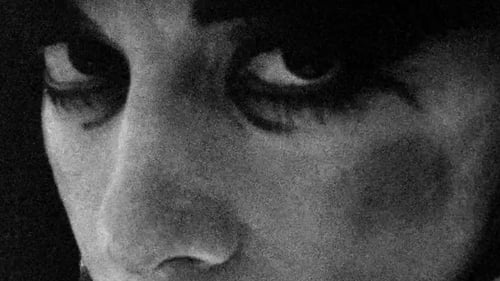
Story
His Oriental predator is at first clothed in black, her 'victim' in white; slowly the costumes change, the victim acquiring a veil of mourning, until finally - as if to underline the ambiguity and interchangeability of their respective roles - the colours are reversed altogether. Still more interesting is the way in which, as the game becomes more ambiguous, Dwoskin adds fresh layers of make-up to his characters' faces, until they become almost caricature masks of their original selves.

Director
16 mm, color, silent, 10 min. Animation of Seminole patchwork.

Director
“Superimposed photographs of Mr. Fleischman’s butcher shop in New York, and the Kiowa around Anadarko, Oklahoma–with Cognate Material. The strip is dark at the beginning and end, light in the middle, and is structured 122333221. I honor it the most of my films, otherwise a not very popular one before 1972. If the exciter lamp blows, play Bert Brecht’s Mahogany.”– Harry Smith

Director
Unfinished commercial adaptation of L. Frank Baum's The Wonderful Wizard of Oz which was shelved after Smith's close friend, the executive producer and primary financial backer Arthur Young died of cancer. Portions released as No. 16, 19, and 20. From the reported three to six hours of camera test footage (rushes) only ca. 15 minutes, in the form of non-color-corrected rushes, is known to be extant. The only completed bit is The Approach to Emerald City, a 5 (other sources say 9 resp. 12) minute sequence set to music from Charles Gounod's Faust.
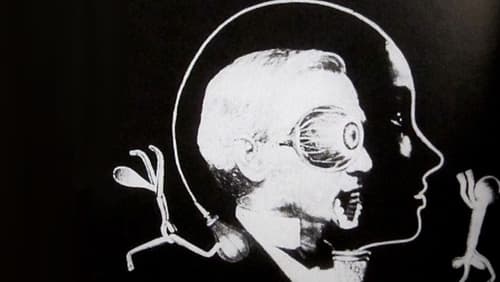
Editor
The first part depicts the heroine's toothache consequent to the loss of a very valuable watermelon, her dentistry and transportation to heaven. Next follows an elaborate exposition of the heavenly land, in terms of Israel and Montreal. The second part depicts the return to Earth from being eaten by Max Müller on the day Edward VII dedicated the Great Sewer of London.

Producer
The first part depicts the heroine's toothache consequent to the loss of a very valuable watermelon, her dentistry and transportation to heaven. Next follows an elaborate exposition of the heavenly land, in terms of Israel and Montreal. The second part depicts the return to Earth from being eaten by Max Müller on the day Edward VII dedicated the Great Sewer of London.

Director
The first part depicts the heroine's toothache consequent to the loss of a very valuable watermelon, her dentistry and transportation to heaven. Next follows an elaborate exposition of the heavenly land, in terms of Israel and Montreal. The second part depicts the return to Earth from being eaten by Max Müller on the day Edward VII dedicated the Great Sewer of London.

Director
Cut up animation and collage technique by Harry Smith synchronized to the jazz of Thelonious Monk's Mysterioso.

Director
16 mm, color, 3:35 or 10 min. Study for No. 11. "An exposition of Buddhism and the Kaballah in the form of a collage. The final scene shows Agaric mushrooms growing on the moon while the Hero and Heroine row by on a cerebrum."

Director
16 mm, color, 10 min. Untraced collage.

Director
16 mm, black & white, silent, 5 min. Untraced collage. Later expanded to No. 12.

Director
16 mm, color, silent, 5:25 or 15 min. "Optically printed Pythagoreanism in four movements supported on squares, circles, grillwork, and triangles with an interlude concerning an experiment."

Director
16 mm, color, silent or mono, 1:30 or 20 min. Untraced red-green anaglyph 3-D film.

Director
Experimental short. 16 mm, color, silent, 2:30 or 6 min. Sequel to No. 4.

Director
16 mm, black & white and color, 2:16 or 6 min. Silent though possibly intended to be screened with Dizzy Gillespie's Manteca. The film starts with a color sequence showing Smith's painting Manteca (ca. 1950) with which he tried to subjectively depict Gillespie's song, every brushstroke representing a music note. The film concludes with black & white superimpositions.

Director
Hand-painted 35 mm stock photographed in 16 mm, color, 3:20 or 10 min. Reportedly cut down from about 30 min. Initially intended to be screened with and synchronized to Dizzy Gillespie's Guarachi Guaro or Manteca. "Batiked animation made of dead squares...".

Director
Hand-painted 35 mm stock photographed in 16 mm, color, 2:15 or 10 min. Initially intended to be screened with and synchronized to Dizzy Gillespie's Algo Bueno. This film "takes place either inside the sun or in... Switzerland" according to Smith. To produce this film he used a technique that involved cutting stickers of the type used to reinforce the holes in 3-ring binder paper. These were applied to 16 mm movie film and used like a stencil. Layers of vaseline and paint were used to color each frame in this manner. The effect is hypnotic, psychedelic and is something like a visual music.

Director
Hand-painted 35 mm stock photographed in 16 mm, color, silent, 2:20 or 5 min. Initially intended to be screened with and synchronized to Dizzy Gillespie's Manteca or Guarachi Guaro. "...the history of the geologic period reduced to orgasm length."






